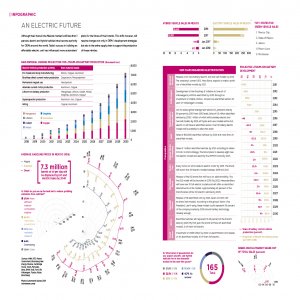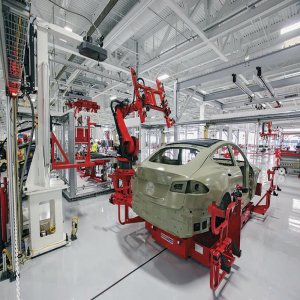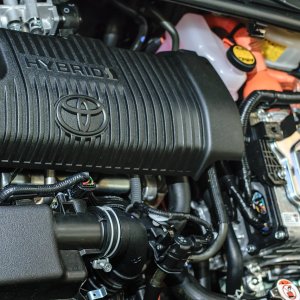Business Strategies that Beat the Tide

STORY INLINE POST
Q: What does Volkswagen’s new partnership with Navistar imply for MAN’s operations in Mexico?
A: Having a partner with significant presence in North America such as Navistar is a key step toward Volkswagen Truck & Bus becoming the main global producer of heavy vehicles. Volkswagen was on the lookout for the best collaboration alternatives and it created a joint venture with Navistar to pursue two objectives: to promote joint technical development and to improve purchasing operations. The final goal of this interaction is having a company that looks for new synergies, growth opportunities and better purchasing options.
Each of the 12 brands that comprise the Volkswagen Group will keep its own identity, however. There is a common force behind them that enables the group to remain competitive, but each one is unique in the eyes of the client. Volkswagen Truck & Bus is no exception and regardless of our partnership with Navistar, the company will hold on to its market position and continue competing. Similarly, we will keep working and defending our own brand’s characteristics in Mexico.
Q: Production and sales of heavy vehicles faced a tough year in 2017. How has MAN Truck & Bus performed?
A: 2017 may turn out to be the best year in terms of sales for MAN Truck & Bus. The heavy vehicle sector registered a 5.2 percent drop in 2017. The most significant drop was in the truck segment while the bus market remained firm. However, MAN Truck & Bus saw an increase in sales volume of 22 percent compared to the numbers of 2016. If we divide our growth by segment, MAN will reach 48 percent growth in the truck sector and 7 percent in the bus sector.
Q: What level of growth is MAN Truck & Bus expecting in 2018?
A: There is plenty of uncertainty for 2018 because of the NAFTA renegotiations and the effect of presidential elections in Mexico. We understand NAFTA is a 25-year-old treaty that needs to be modernized. There will be a revision but we understand that trade between Mexico and the US in the heavy vehicle sector will be not be strongly affected. Mexico is the greatest exporter of articulated trucks in the world and 90 percent of these exports are directed to the US. Also, 50 percent of the parts for these vehicles are manufactured in the US.
If we keep our sales volume steady, it will be a positive year. I am not overly worried about the drop in sales in 2017 because the industry’s slowdown was foreseeable. I expect the year to finish with sales falling 3-5 percent, mainly because of the good results the industry enjoyed in 2016. The last two months of that year resulted in record-breaking numbers because of advance purchases attributable to uncertainty with President Trump’s discourse. Over 5,500 units were sold only in December. To put results in perspective, a 5 percent drop in 2017 would still mean growth of between 8 and 10 percent compared to 2015, which was a more stable year.
Q: How has MAN Truck & Bus’ counter-current development impacted the company’s growth expectations for 2018?
A: To date, we have reached a market share of 14 percent in the bus sector and 3 percent in the truck segment. Originally, our expectations were to reach an 18 and 5 percent share respectively by the end of 2018 but we have established a new projection. MAN Truck & Bus’ new objective by 2020 is growing its overall market share to 10 percent from our current 5.3 percent, resulting in sales of approximately 5,000 units. Our growth strategies will be founded on product, network development and aftersales services, and we want to increase our dealer network to 20 points of sale throughout the country by the end of 2018.
Q: What new products and technologies is MAN Truck & Bus bringing to the table?
A: We launched our highest number of new products for the decade in 2017. We released the new Delivery vehicle family comprising six new models that required a US$350 million investment from our headquarters. This line includes a prototype of the first 100-percent electric light truck developed by Volkswagen. This truck is already being tested and we expect it to be mass produced by 2020. The company is also introducing products equipped with technology that meets Euro VI emissions requirements. Even though Euro VI will become the standard in 2021, MAN is ready with this technology and we expect to start marketing it in 2019 when the transition will begin.
In the bus segment, we launched the Volkswagen 14.190 SCD bus. Approximately 50 percent of Mexico’s buses are Class 7, weighing between 12 and 15 tons, including semi-forward-control (SCD) buses that account for sales of between 3,500 and 4,000 units a year. The 14.190 SCD is our bet in this segment and it was a model specifically designed for the Mexican market.
MAN is introducing the latest diesel, electric and natural gas technology in the heavy vehicles sector. Diesel motors will never die off, they will co-exist with new technologies. We will launch a new natural gas Constellation unit with a Euro VI engine that the company previously tested in Brazil. We expect to start testing this vehicle in Mexico and we also brought our most successful natural gas chassis, the MAN A69, to ExpoTransporte so Mexican clients could start becoming familiar with European standards.
Q: What is MAN’s position regarding natural gas and hybrid units?
A: New technologies are becoming very strong in Mexico, mainly in main cities where there is a necessity to reduce pollution and noise levels. MAN has already developed and is actually using both natural gas and hybrid units in Europe. We are introducing natural gas in Mexico, first in buses and recently we have presented a prototype for a truck.
From our perspective, when natural gas technology matures in Mexico, electric technology will be strong in Europe. It will make no sense for Mexico to introduce hybrid technology and put an unnecessary transition between natural gas and full-electric models. For this reason, our bet is currently on natural gas and we will eventually move toward electric technology.
Q: What is MAN’s perspective regarding the cab-over truck sector?
A: In Mexico, most trucks are long-nosed. MAN was the first brand to bring cab-over trucks to Mexico in 2004 and 100 percent of our products are now cab-over. These trucks deliver competitive advantages, including safety, visibility, maneuverability, driver comfort and greater load capacity than conventional vehicles. Furthermore, they have been designed to respond better than long-nosed trucks in an accident. We understand that it will take time to change misconceptions related to long-nosed trucks but we believe the future is in cab-over units.
























